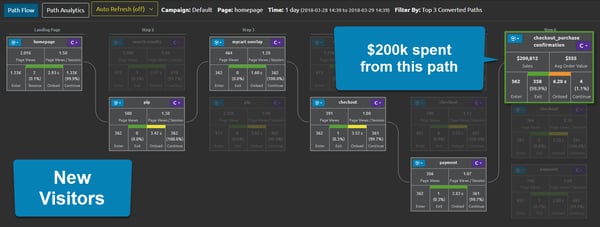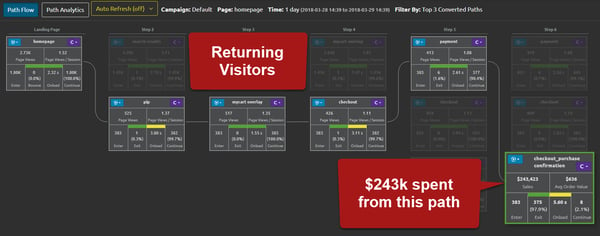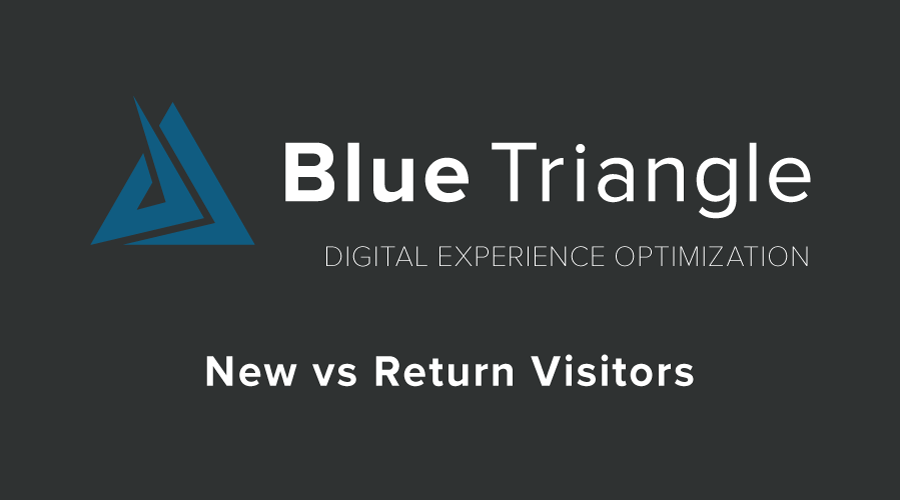One of the key features of Blue Triangle's Digital Experience Analytics is the ability to see, in real-time, new vs returning visitors. All from a customer journey perspective.
Why is this important?
It eliminates blind spots. It allows the business to drill-in, live, to see how users are traversing your digital assets and what their experience is.
Let’s say you are a retailer that sells electronics. Several of your items are part of this week’s marketing loyalty campaigns. Many of them are offered at low price points. Things customers will buy with one-click, or without comparison shopping. Measuring those are easy.
Now what about those $5,000 Ultra 4K Curved TVs? The customer journey shows a high exit rate. That’s expected. Users don’t typically buy big-ticket items on the first go around. But how many of them are returning visitors?
For marketing analysis, the business wants to know:
- What are the returning visitors doing?
- Are they reviewing product specification pages?
- Are they reading product reviews?
In the example below, returning visitors spent $40k more than new visitors when they traversed the same path. They also spent $81 more per order.


The ability to see this type of data enables the business to determine what type of touch point should be next. Should we send them a “buy that TV now and get a service plan for free”, or “buy now and we’ll discount $100.”?
Many of the available technologies in this space were developed in the 1990’s or early 2000’s. The game has changed. They are obsolete.
Let us show your innovation team how Blue Triangle has changed the game in the way many retailers, and travel & transportation leaders, analyze their online digital experiences.
For now, watch a slice of it here: Digital Experience Optimization
Takeaway
As a retailer, or other omnichannel executive focused on delivering revenue online, you cannot look at business metrics and revenue in a vacuum. You can’t rely on your IT team measuring web performance in their silo. Why? Their metrics do not tell the whole story.(They have bounce rates. But no exit rates. They have page load time, but no customer journey.)
And they certainly don't have new vs returning visitors.
The two must be merged to provide business value and understand what your business’s overall digital experience is and how to adjust it on the fly.

During the holiday rush, every shopper matters
Optimize the customer journey before the eCommerce event of the year.

.jpg)

